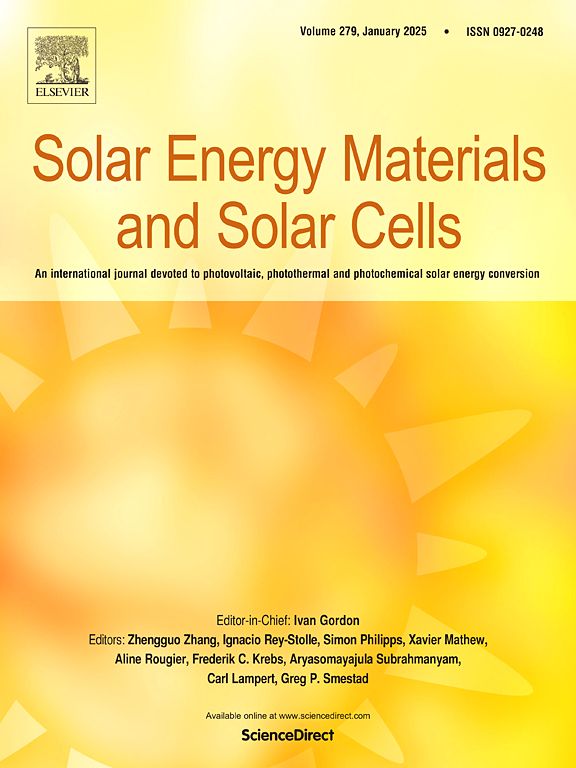Improving buried interface contact by molecular bridging effect for inverted perovskite solar cells
IF 6.3
2区 材料科学
Q2 ENERGY & FUELS
引用次数: 0
Abstract
The commercial self-assembled monolayer (SAMs) has been shown to significantly enhance the power conversion efficiency (PCE) of inverted (p-i-n) perovskite solar cells (PSCs) when employed as a double hole transport layer (HTL) on nickel oxide (NiOx). Despite these improvements, the inherent hydrophobicity of the SAMs results in suboptimal crystallization and the formation of micro-scale voids at the buried interface of the perovskite layer, which in turn leads to significant interface defects and serious nonradiative recombination. In this work, we introduce a molecular bridging layer composed of Diethyl (Phthalimidomethyl) phosphonate (DP), characterized by its carbonyl groups and phosphoryl bonds, to be deposited onto the surface of Me-4PACz. This bridging layer demonstrates a remarkable ability to coordinate with lead ions, providing a robust binding affinity that facilitate excellent adhesion to the substrate surface. The synergistic interaction of the two functional groups within the DP layer effectively mitigates bulk-phase defects and suppresses nonradiative recombination at the buried interface of the perovskite. As a result, PSCs incorporating the DP layer achieved a champion PCE of 23.26 % on an active area of 0.09 cm2. Additionally, The unencapsulated PSC maintains above 50 % of its initial PCE in the air with a relative humidity (RH) of 50–60 % for 1000 h. This work highlights the potential of integrating bridging layers in optimizing the performance and stability of PSCs.

求助全文
约1分钟内获得全文
求助全文
来源期刊

Solar Energy Materials and Solar Cells
工程技术-材料科学:综合
CiteScore
12.60
自引率
11.60%
发文量
513
审稿时长
47 days
期刊介绍:
Solar Energy Materials & Solar Cells is intended as a vehicle for the dissemination of research results on materials science and technology related to photovoltaic, photothermal and photoelectrochemical solar energy conversion. Materials science is taken in the broadest possible sense and encompasses physics, chemistry, optics, materials fabrication and analysis for all types of materials.
 求助内容:
求助内容: 应助结果提醒方式:
应助结果提醒方式:


